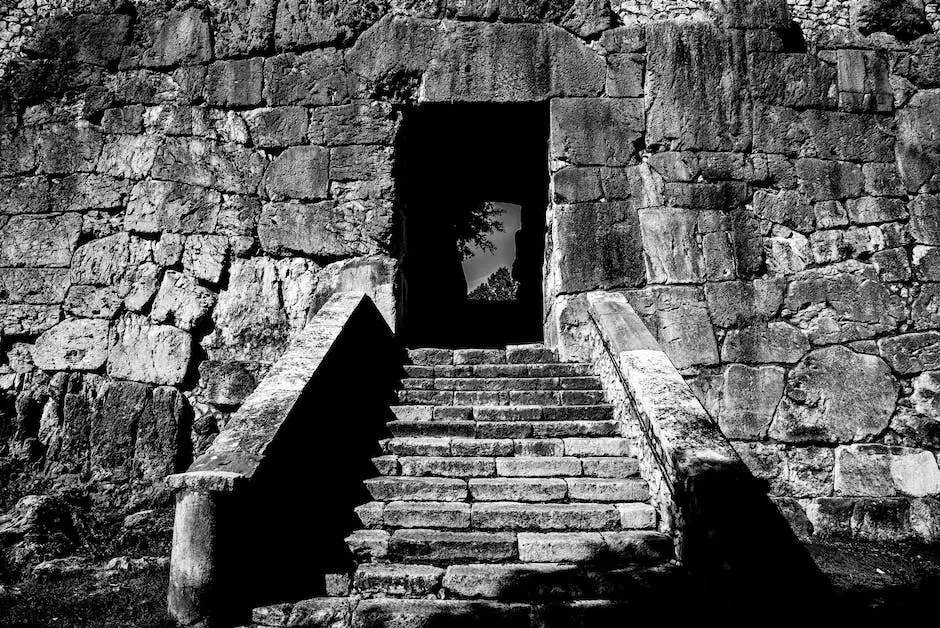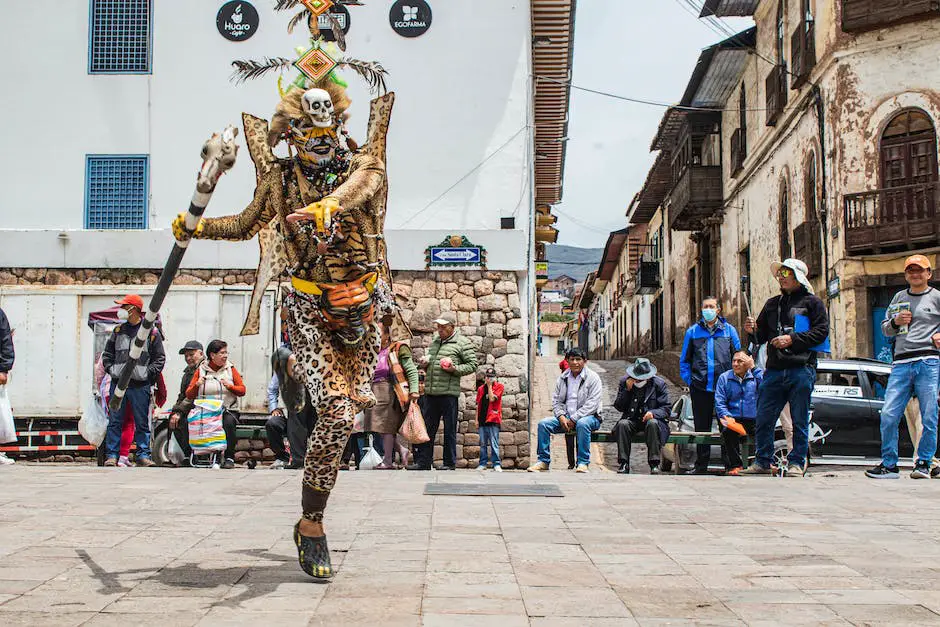Delving into the mystical world of ancient Aztec mythology is a thrilling venture. This rich tapestry of gods, symbols, and stories has found its unique place in the realm of board games. Aztec themed board games not only allow enthusiasts and hobbyists to engage in entertaining gameplay but also offer a doorway into the past, shedding light upon the fascinating facets of Aztec civilization. The goal here is to enrich the reader’s understanding of the mythology and its representation in various games, and potentially guide aspiring designers in creating their own mythology-inspired games. Whether you are an avid gamer, a history buff, or a creative soul, this guide is sure to pique your interest and deepen your appreciation for Aztec-inspired board games.
Understanding Aztec Mythology
Understanding Aztec Mythology: The Gods
Aztec mythology is rich in lore and is steeped in the culture’s larger worldview. Central to that worldview is a deep belief in the power and influence of the gods. Collectively known as Teotl, these deities held power over different aspects of Astec life, nature, and the cosmos.
Quetzalcoatl, the Feathered Serpent
Quetzalcoatl, the Feathered Serpent, is one of the key figures in Aztec mythology. As the patron of priests and the inventor of the calendar and books, Quetzalcoatl is a symbol of learning and culture. Notably, he is also associated with wind and is often portrayed as a boundary-maker between the earth and the sky.
Huitzilopochtli, the Sun and War God
Huitzilopochtli, another central figure, is the Aztec god of the sun and war. Instrumental in the Aztec story of creation, he defeated his hundreds of siblings to become the sun, symbolizing victory against all odds. Considered as the primary deity of the Aztec empire, he was closely associated with Tenochtitlan, the capital city.
Rain God, Tlaloc
Rain god, Tlaloc, controlled the rain and every form of water. He was also the god of thunder and lightning and was seen as a protector of the earth’s fertility. Aztecs feared him because he could send hail or lightning to destroy their crops but they also revered Tlaloc for his ability to bring life-giving rain.
Other Aztec Gods
Other gods in the Aztec pantheon include Tezcatlipoca, the god of night, magic, and destiny; Xipe Totec, the deity of sacrifice and rebirth; and Mictlantecuhtli, the lord of the underworld.
Embracing Aztec Mythology through Board Games
Aztec mythology, with its rich narrative and vibrant deities, provides an incredible source of inspiration for those who enjoy board games. In many board games that integrate Aztec mythology, players get to assume the roles of powerful gods and use their divine powers to compete with each other in epic games of strategy and skill.
For instance, in games like Tzolk’in: The Mayan Calendar and Teotihuacan: City of Gods, key elements of Aztec mythology are cleverly integrated into gameplay. This might be through resource management mechanics where players take on the role of gods like Tlaloc, manipulating water resources or invoking rain to gain advantage. Although not entirely based on Aztec mythology, these games offer a good sampling of how Aztec narratives can be intricately woven into gameplay.
In card games iterations, the gods may appear as formidable entities who could either assist or obstruct players, adding an extra layer of strategy to gameplay. This is typically dependent on the progression of the game and requires smart decision-making around when and how to utilize these powerful card abilities.
The dynamics of risk and reward are also significant within these games. Mirroring the Aztec ritual of offering sacrifices to gods in exchange for blessings, players too may find themselves making sacrifices in the form of character abilities, game resources, or progression points, all with the hope of securing greater returns.
Having a firm grasp of Aztec mythology enhances the enjoyment of these games. Having knowledge of the significance and tales of each god adds depth to the gameplay, making for a richer and more engaging experience. Furthermore, the diverse repertoire of Aztec gods and myths offer endless opportunities for unique game narratives, strategic decisions, and captivating artistic representations.

Aztec Themed Popular Board Games
A Closer Look at ‘Tzolk’in: The Mayan Calendar’
One board game that brilliantly integrates elements of Aztec mythology is ‘Tzolk’in: The Mayan Calendar’. This game, conceived by accomplished designers Simone Luciani and Daniele Tascini, transports players to the extraordinary world of ancient Central America. Here, they play within the intricate societies of the Mayan and Aztec civilizations. A major game mechanic is the Tzolk’in calendar wheel, ingeniously designed to keep the gameplay progressing at a consistent rhythm.
The purpose of the game is to wisely place workers on the massive, interlinked gears to activate different actions when the gears rotate. Each player’s turn signifies the passage of time, with the central gear causing a ripple effect through the surrounding gears as it moves. This can trigger strategically beneficial shifts in the game, allowing players to gather resources, acquire idols, or even construct monuments— all crucial methods to score victory points that ultimately determine the game’s winner.
‘Tzolk’in: The Mayan Calendar’ seamlessly incorporates Aztec mythology throughout the game. This is evident in the Aztec-themed components such as maize, wood, stone, and gold—all resources that players must gather to progress in the game.
Teotihuacan: City of Gods
Another game that brilliantly adapts Aztec mythology and culture into modern board gaming is ‘Teotihuacan: City of Gods’. Designed by Daniele Tascini, it lets players step into the role of noble families, seeking to earn legendary status by contributing to the construction of the Pyramid of the Sun in the ancient city of Teotihuacan.
The setup of the game is an intriguing map with eight interconnecting locations. Players’ pieces or “workers” make their way across this grid, stopping at various points to perform actions. These actions can include gathering resources, climbing the temple track, building the pyramid, or paying homage to the gods.
The game’s components, such as temples, pyramid tiles, and masks, all draw heavily from Aztec culture and mythology. Even the player’s progression up the three temple tracks (for the Moon, Sun, and Earth) represents the players’ devotion to the Aztec gods, and is rewarded with bonus points or resources.
Azteca
A true tribute to Aztec civilization and mythology is the game of ‘Azteca’. This game immerses players in the lives and challenges faced by Aztec tribes. The objective of ‘Azteca’ is to unite the tribes, conquer territories, build the largest empire, and make the most offerings to the gods.
Setting up the game involves laying down the terrains, half of which are desert (representing the adversities the tribes faced) and half fertile ground (indicating opportunities and resources). The players, as tribe leaders, use their action points to move tribes, grow crops, increase their strength, and make offerings to the gods.
Aztec mythology is woven into the narrative through representations of the gods and the importance placed on making offerings to them. Players must manage their resources, choose when to wage war, and when to make offerings, balancing the many demands of Aztecan life.
Board games set in the lush and intricate world of Aztec mythology offer more than just entertainment. They are the ideal combination of history, strategy, and deep-rooted cultural traditions that transform a casual game night into an immersive journey through time.

Game Mechanics and Aztec Elements
Strategy and the Influence of Aztec Mythology
The intricacies of Aztec mythology serve more than just as a backdrop in these games, they form the core principles of the game strategies. Using the same detailed planning and organization that the Aztecs employed for their religious ceremonies and architectural feats, players can formulate their winning moves. Take the game ‘Tzolk’in: The Mayan Calendar’ as an example, strategic planning is synchronized with the turning of gears, symbolizing the cyclical nature of the Aztec calendar. This not only enhances the gameplay, but also gives players a taste of the unique aspects of Aztec culture.
Role of Luck and Player Interaction
In Aztec mythology, the gods were capricious and their favor was not always guaranteed. This element can potentially translate into board games through the introduction of luck-based elements. Dice, event cards, or random draws can introduce a level of unpredictability to mirror the often unpredictable whims of the Aztec gods. As in Aztec society where alliances and rivalries were formed, board games can encourage player interaction, negotiation, alliance-building and even sabotage – mirroring the Aztec’s political and socio-dynamic environment.
Theme Immersion Through Aztec Symbols
The inclusion of Aztec symbols like pyramids, lunar cycles, and the Aztec calendar strengthens the atmospheric immersion of the game. Board games can feature impressive pyramid structures that players could build or climb to earn points, symbolizing the Aztec’s reverence for their colossal architecture. The lunar cycles, often seen in the context of the Aztec calendar, can be incorporated into the play mechanics. A full cycle could signify a full round, or a specific phase could trigger a special event. As in Aztec mythology where lunar cycles were connected to agricultural activities and religious events, games incorporating this element create an authentic experience.
Aztec Elements Enhancing Player Engagement
One of the most prominent aspects of Aztec life was the calendar system (the Xiuhpōhualli and the Tōnalpōhualli). Players may need to plan their moves based on a cyclical calendar system, much like the Aztecs had to align their activities with sacred days or risk divine retribution. This adds another layer of engagement to the game, as players must pay close attention to the game’s progression rather than just their immediate position.
The gameplay can also involve players taking on the roles of different Aztec deities, each with their unique abilities and characteristics. Directly taking on the role of a god, like Quetzalcoatl the Feathered Serpent or Huitzilopochtli, the god of the sun and war, will make players feel more connected to their in-game actions and decisions. This encourages deeper understanding and appreciation for the multifaceted aspects of the Aztec mythology tying the players closer to the game.
Conclusion
Interweaving Aztec mythology and its rich cultural heritage into the mechanics of board games leads to the creation of an absorbing gaming milieu. Not only does this enhance the intensity of gameplay strategies, influence of luck and player interactions, but it also brings a layer of thematic depth. The end result is a gaming experience that is enveloped in the captivating narratives and deep-rooted traditions of the Aztec civilization.

Designing an Aztec Mythology Based Game
Grasping Aztec Mythology and Culture for Innovative Board Game Design
A thoughtful and engaging game design rooted in Aztec mythology requires an initial plunge into understanding the nuances of this fascinating culture. This includes gaining a deep understanding of its history, aesthetic practices, and rich mythological stories. The symbolism, allegories, and cultural significance of various deities featured in Aztec mythology, such as Quetzalcoatl, the Feathered Serpent, believed to be the creator of humanity, or Huitzilopochtli, the god of sun and war, are foundational in this respect. Weaving these elements into the game can provide an enthralling experience, transporting players right into the ancient Aztec world.
Incorporating Aztec Mythology into Gameplay
Once you’re equipped with the knowledge of Aztec mythology and culture, the next step is to incorporate these elements into the gameplay. This can be done through the game’s narrative or mechanics, or both. A game can be devised in which players play as different Aztec deities, each having unique capabilities and attributes, aiming at achieving their individual godly goals. Another possibility can be to weave a narrative which revolves around the common folk of the Aztec society trying to appease the gods through various ritualistic offerings or quests. The balance between maintaining actual historic information and creating engaging gameplay is crucial.
The Aesthetics and Design Elements
The game aesthetics should capture the essence of the Aztec culture. Ancient Aztec artifacts, pyramids, temples, and glyphs can influence the game’s physical components and board design. The vivid colors used in their art and crafts, the intricate mosaic work, stone sculptures, and feather works could lend a unique touch to the game pieces. The game board itself can be styled as an Aztec city, with different game spaces reflecting facets of their daily life or sites of religious significance.
Prototyping and Play-Testing
As with any board game creation process, once your Aztec mythology-inspired game concept is ready, develop a prototype. This could be a rudimentary setup with hand-drawn elements and simple pieces. The purpose at this stage is to play-test the game with a few willing players, receiving feedback about the game’s mechanics, challenge level, engagement factor, and how well the theme comes across.
Refining Game Rules and Mechanics
After initial play-testing, take the feedback onboard to refine your game. Improve game mechanics, rebalance elements which may seem over or underpowered, and ensure that your game rules are clear, concise, and accessible. Play-testing and refining can be an iterative process that can take several rounds before you have a well-balanced, engaging board game that beautifully incorporates the essence and grandeur of Aztec mythology. Remember to maintain the balance between having fun and imparting knowledge about Aztec culture. This will make your board game a path of joyous learning as well.

By exploring multiple aspects of Aztec mythology in board games, we have learned not only about the mythical beings and symbols but also about the incredible ways in which they are intertwined within the game dynamics. The quest doesn’t end here. Whether you are a player seeking new challenges or a designer nurturing ideas for your own Aztec-themed game, there is always more to explore and learn. So embrace the journey, engage with the mysticism and get lost in the labyrinth of Aztec myth and games. Remember, the magic of this ancient civilization lies in every roll of a dice, every card drawn, and in every character moved around the board. These games open up new realms of strategy, luck, and interaction, bound together by an undercurrent of ancient mythology.
